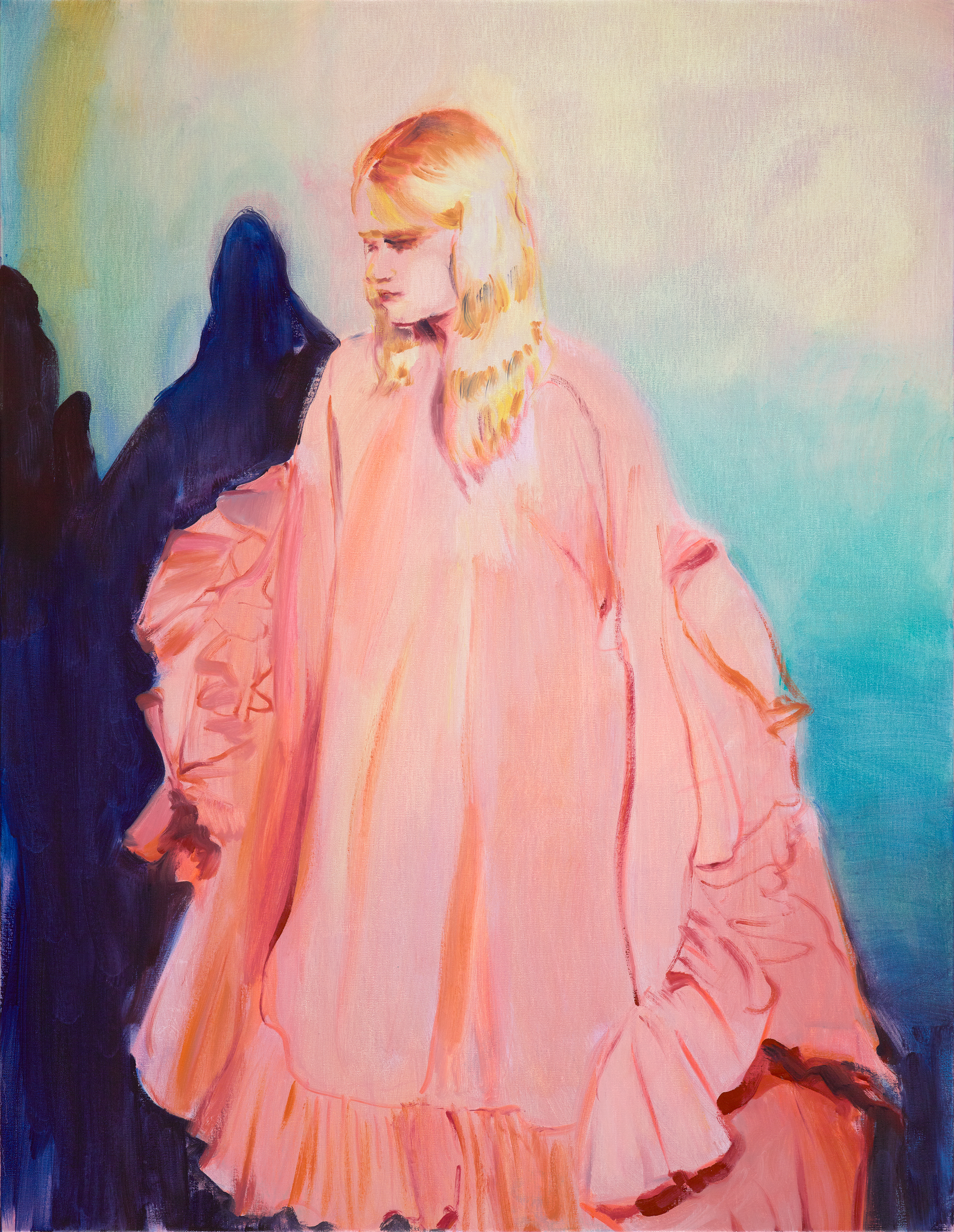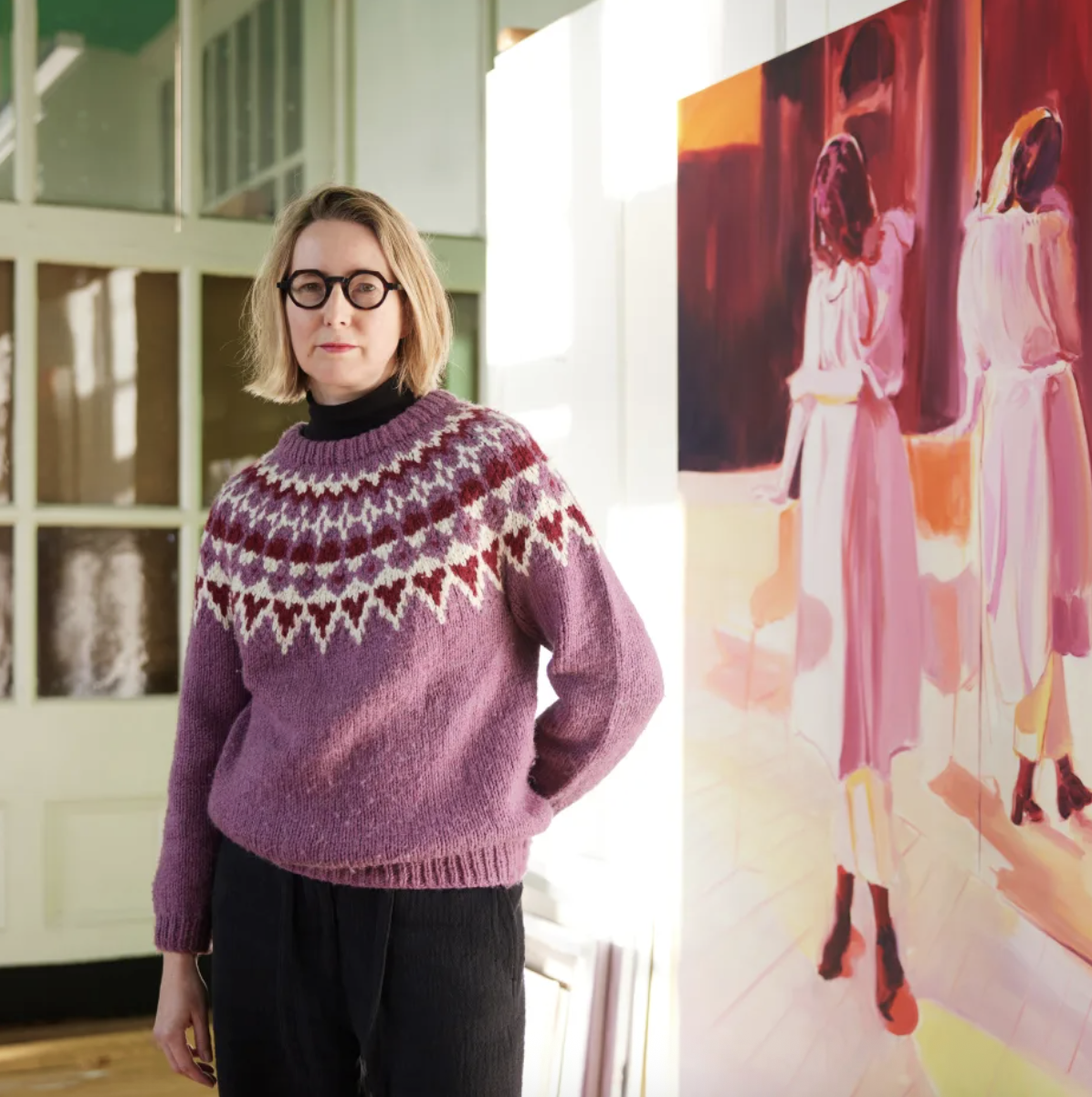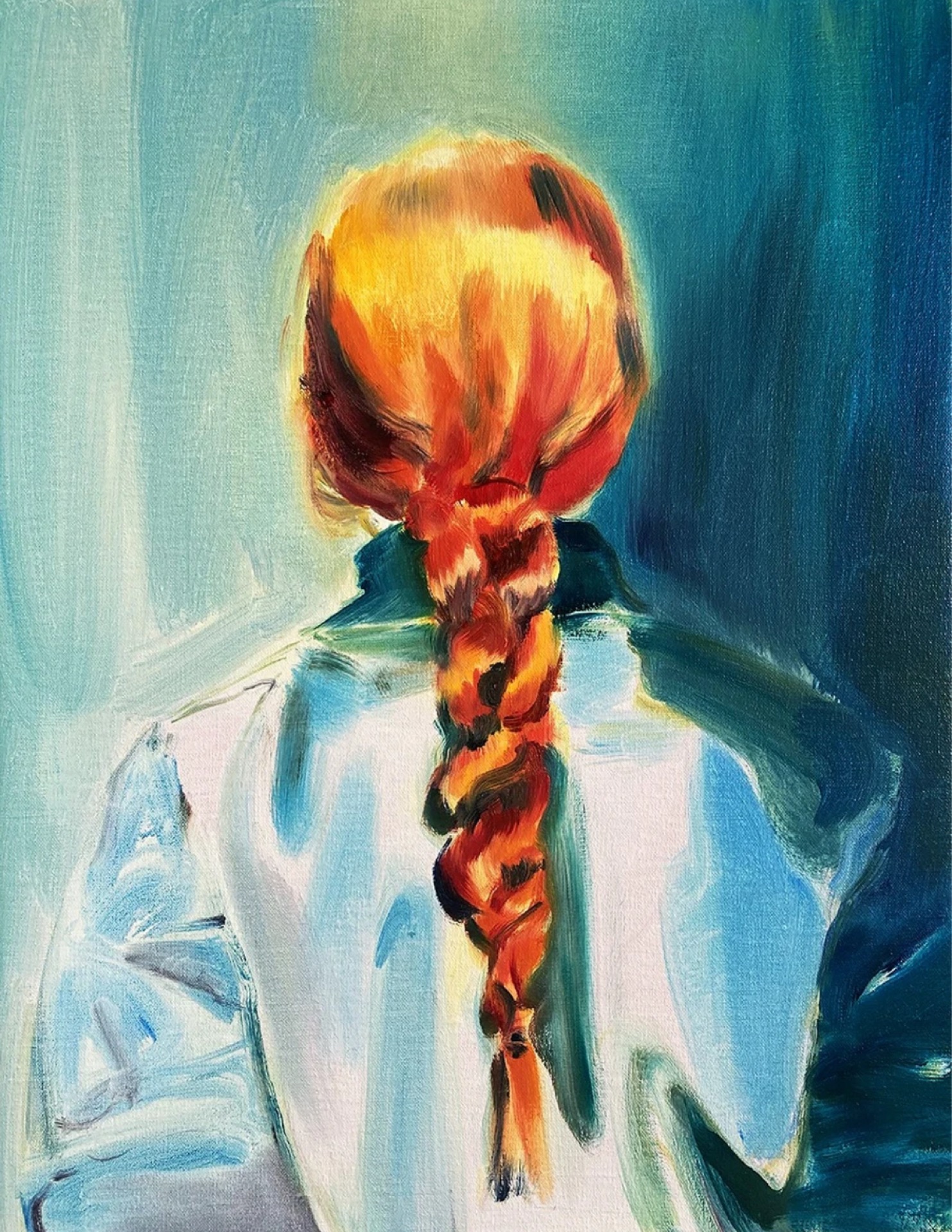Lindsey Bull in focus: Fashion, expression, and the human condition
Born in Hereford in 1979, Lindsey Bull has always been fascinated by the emotions hidden in the glance, smile or posture of a stranger passing by. While walking down the streets of Manchester where the artist lives and works, Bull notices people’s expressions, their body language and their sense of fashion to assimilate what these non-verbal forms of communication could convey more about them. Influenced by Francis Bacon and Lucian Freud and German Expressionists, her work explores what she describes as “the human condition.”
Bull’s ability to extrapolate and understand a person’s innermost emotions on her vibrant canvas helps her bring a different perspective to our upcoming exhibition in London, Women in the Picture. She is joined by seven other brilliant and powerful artists - Oriele Steiner, Konstantina Krikzoni, Ewa Juszkiewicz, Gal Schindler, Monika Marchewka, Stefania Tejada, and Lee Miller. Together, these artists create detailed portraits of women around us, not as heroes or victims framed by the male gaze but as people who are allowed to exist in each frame the way they choose to.

Babydoll (2025), courtesy of Bo Lee and Workman, © Jo Hounsome Photography
Supplementing her exploration of the human condition, fashion and style is integral to Bull’s works. She uses images from fashion magazines as inspiration, which is evident in her works from the way the dresses are draped on a figure to the studded jackets, all expressing a varied range of emotions. With their gaze either veiled or averted, she memorialises fleeting, everyday moments, leaving the viewer speculating what happened. Bull’s work seems to be saying that: the more we understand each other, the more empathetic we become and the more likely we are to lend our shoulders to a stranger.
Artworks on view: Recent exhibitions and residencies
This year, Bull’s work has been showcased in a recent solo exhibition, Candyfloss, at Bo Lee and Workman. The exhibition was focused on the soft vibrance in Bull’s works that connected a figure’s interior and exterior worlds. Her works were also featured earlier this year in London at Cedric Bardawil for a group exhibition titled, Auguries of Innocence. Inspired by William Blake’s 1803 poem, the show intended to probe into the social, political, and artistic conditions of Britain today by bringing together ten contemporary artists working in Britain. Bull’s works are easily able to converse with rooms full of artworks. Her figures are shy, melancholic and mysterious, drawing the viewers gaze and pulling them into a moment of introspection. They then carry this gaze with them to other works, drawing a broad audience into the time and space her works reflect. It is then no surprise that Bull was one of the artists selected for Palazzo Monti residency in Italy in 2024.

Image of the artist, courtesy of Bo Lee and Workman, © Lindsey Bull
Bull’s institutional recognition is at the least expansive. Her first solo exhibition, Out of the Cosmic Storm (2012) and one of her first group shows, Awopbopaloobop (2008) were both held at the Transition gallery in East London. Rooted in UK shows, Bull’s progress grows exhibition by exhibition, turning growing local recognition into a steady market presence.
Bull’s market is primarily gallery-led via Bo Lee & Workman and reinforced by curated London visibility. Public auction exposure to date has been limited to smaller curated platforms rather than the main houses; notably, Harlequin (2019) featured in The Auction Collective’s “Top 100”, celebrating the very best contemporary artists creating artwork under £5,000.

Plait II (2025), courtesy of Bo Lee and Workman , © Lindsey Bull
An upcoming opportunity to see her works
In Women in the Picture, Lindsey Bull’s works Plait II (2025), Babydoll (2025) and Hat (2023), each conjures a character who is vulnerable yet resolute. The figures avert the viewer’s gaze, mysterious and shy, while being adorned in striking pinks and deep orange hues, a juxtaposition that pits style against the mood to reveal the swerves of human emotion. Together, with the other artists, the exhibition challenges the narrow frames through which women are too often seen and widens the canvas to their lived realities.








